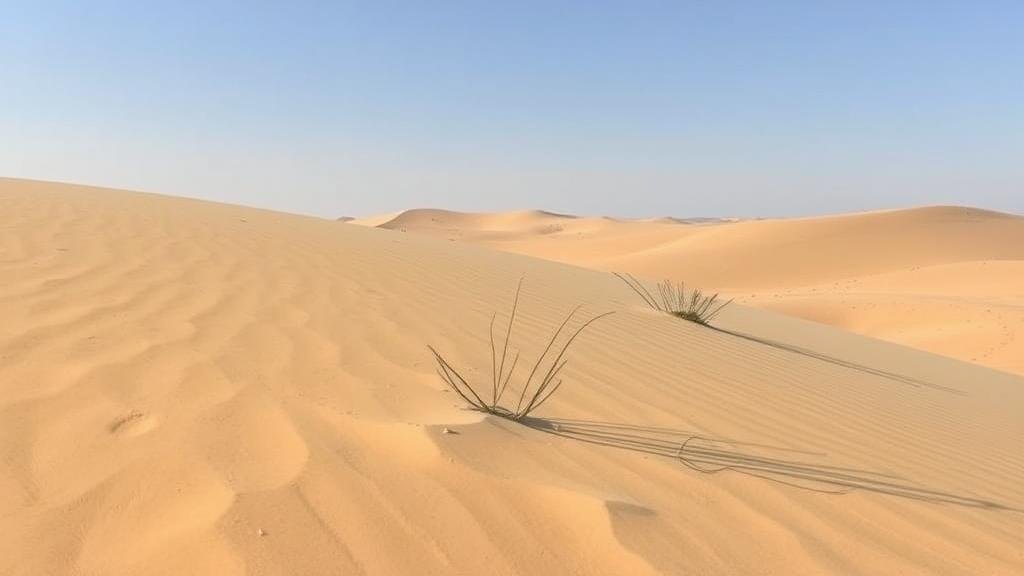Documenting the seasonal migration of desert plants across shifting sand dunes.
Documenting the Seasonal Migration of Desert Plants Across Shifting Sand Dunes
Deserts, often perceived as barren wastelands, are teeming with life and complexity. Among the myriad of organisms inhabiting this arid landscape, desert plants exhibit remarkable adaptations and behaviors, particularly during the seasonal shifts. One of the most fascinating phenomena is the seasonal migration of these plants as they traverse shifting sand dunes. This article delves into the intricacies of this process, supported by scientific research and real-world examples.
The Science of Plant Migration
Plant migration in desert environments refers to the movement of plant species in response to seasonal conditions. As conditions change–namely, temperature variations and precipitation patterns–plants sometimes relocate to optimize their growth and reproduction. In the context of sand dunes, this migration is influenced primarily by wind patterns and soil stabilization.
According to a study published in the journal Ecological Applications, researchers have observed that specific species, such as the Corynopuntia (commonly known as the prickly pear), can migrate as much as 2 meters per year in pursuit of more favorable conditions. This kind of movement is typically driven by the desire to find nutrient-rich soil and sufficient moisture.
Example Locations of Migration
Notable locations where desert plant migration occurs include:
- The Sahara Desert: In North Africa, the movement of drought-resistant species like Acacia has been well-documented. These plants follow seasonal rain patterns, sometimes relocating to areas where water accumulates.
- The Sonoran Desert: In southwestern United States and Mexico, species like the saguaro cactus may experience a slow southward shift due to rising temperatures.
- The Arabian Desert: Here, plant species such as the date palm have migrated to the edges of oases as central dunes shift, altering moisture availability.
The Mechanisms of Movement
Plant migration involves various mechanisms, primarily rooted in adaptations to environmental changes. Some key mechanisms include:
- Seed Dispersal: Wind and wildlife play crucial roles in dispersing seeds, allowing plants to establish themselves in new locations. For example, the Sinai scrub has adapted to utilize wind currents for seed transportation across dunes.
- Clonal Growth: Certain plants can clone themselves through underground rhizomes, which allows them to expand into new areas effectively. An example is the desert poppy, which can spread to stabilize sandy soils.
- Resilient Root Systems: Many desert plants possess extensive root systems that can reach moisture even below shifting sands. This adaptation enables them to survive and thrive in unstable environments.
Impact of Climate Change
Climate change significantly influences the migration patterns of desert flora. According to the Intergovernmental Panel on Climate Change (IPCC), desert areas are expected to face higher temperatures and altered precipitation patterns. As a result, many plant species are forced to migrate more rapidly those conditions for survival.
For example, a recent study conducted by the University of California showed that increased aridity in the Mojave Desert is pushing native species such as the Joshua tree towards higher elevations, away from traditional habitats. As a result, local ecosystems are reshaped, which also affects associated fauna and overall biodiversity.
Documenting the Migration
Documenting seasonal migrations of desert plants is crucial for understanding and mitigating the impact of environmental changes. Researchers employ various techniques such as:
- Additional Remote Sensing: Satellite imagery is used to detect changes in plant distribution and health over time.
- Field Studies: Ground surveys provide qualitative data, allowing scientists to observe patterns of migration firsthand.
- Citizen Science: Increasingly, enthusiasts and volunteers are helping scientists track seasonal changes through programs like the “Desert Migrants Monitoring†initiative.
Conclusion: Actionable Takeaways
Understanding the seasonal migration of desert plants across shifting sand dunes is vital for ecological conservation and climate change adaptation strategies. Here are actionable takeaways:
- Support conservation programs aimed at preserving desert ecosystems and biodiversity.
- Engage in community science projects to help collect and document data on local plant migrations.
- Stay informed about climate change impacts on local environments and advocate for sustainable practices.
The dynamics of desert ecosystems reveal the resilience and adaptability of plant life amidst ever-changing conditions. Through documenting and understanding these migrations, we can contribute to the preservation of these extraordinary environments for future generations.



